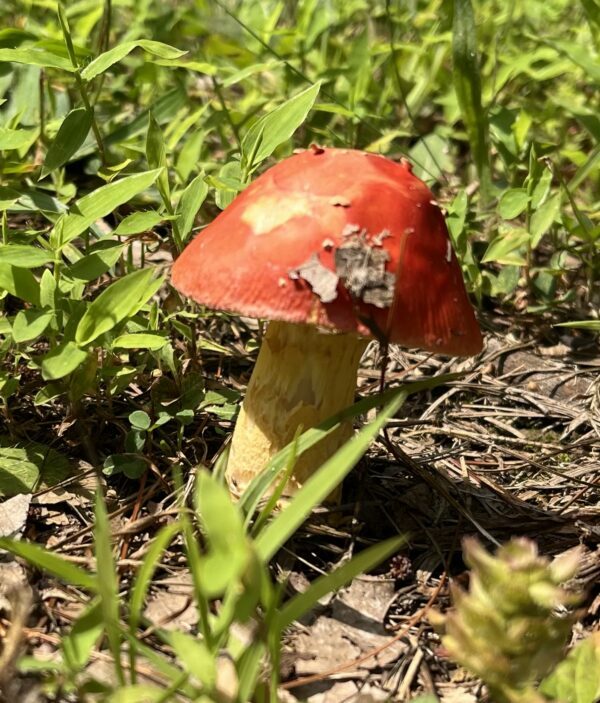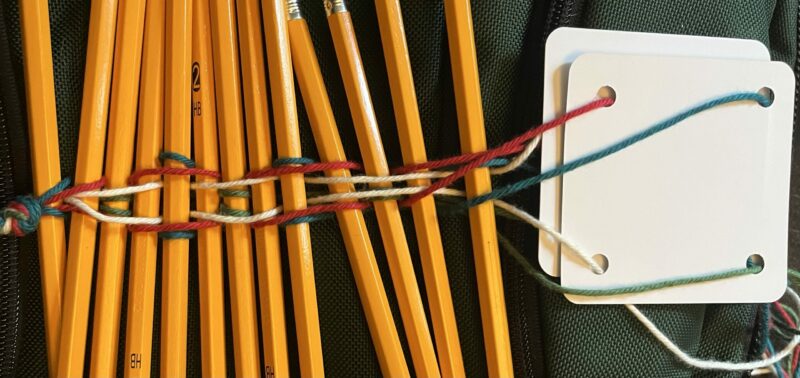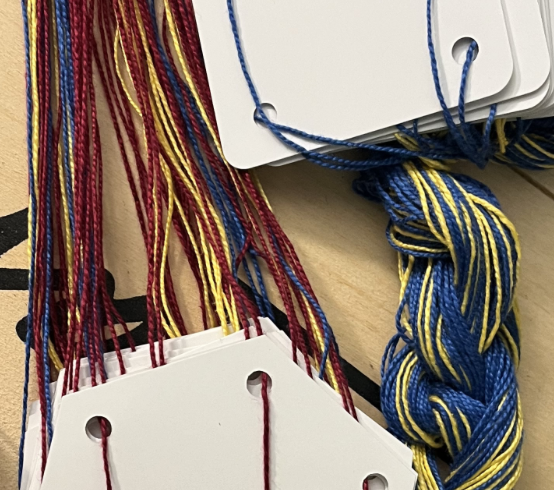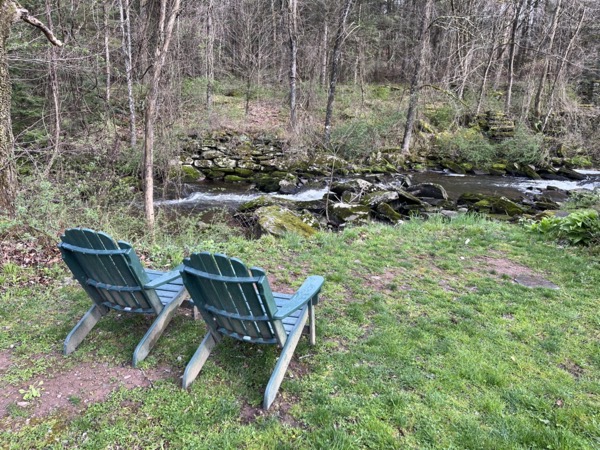You may have noticed that there hasn’t been a post all week. (Bear with me as I maintain the delusion that I have regular readers!) That isn’t for lack of interesting things to talk about, believe me (and not even any more of those statistics equations, though if you happen to be interested… no, probably not). But, you see, this is my 100th blog post. Its number is higher because of drafts, or things that got deleted, but this is the 100th posting to actually appear. With a major number like that, it has to be special, right? So I can’t post the short anecdote, or the quick tip, or even the story of the brussels sprouts, because none of those are worthy. I should write a tablet weaving how-to, or some fancy knitting thing, or some deep philosophical discussion of the importance of the fiber arts in people’s lives.
And so, nothing appears.
But wait… let me quote myself.
“And thus, a blog. I can write and illustrate shorter articles and notes and commentary on string, books, research projects that catch my interest, hopefully without getting caught in the ‘bigger and better’ trap. Quick and informal, with the understanding that things may be formalized later.”
Oh yeah. Doing something now, rather than planning and delaying and never getting things done. I’m not talking about posting crap, but rather a couple of interesting paragraphs frequently, instead of a dissertation every few years. I do have a lot of interesting things in the works: two tablet weaving articles, one on Ram’s Horn and one on 3/1 twill, an essay on the role of the internet in preserving and transmitting fiber arts information, and an article on time management and productivity for artists. Plus several articles on cool and useful contraptions that can be built from PVC! But that doesn’t mean that I can’t tell you about the knitting, or the dog, or whatever. Right?
I took last weekend “off” and read the entire The Unicorn Tapestries, by Anne Jackson Freemantle. A book about string and plants – what could be more perfect? There are 6 tapestries and some pieces of a seventh, late 15th century. They are owned by the Metropolitan Museum of Art, and are on permanent display at the Cloisters. These are huge: 12 by 14 foot panels (3 and a half by 2 and a half meters, more or less). They are highly detailed and expressive, with people that look like people. A favorite quote from an author (who? er…) on the writing of fantastic fiction says that if you take care of the chickens, the dragons will take care of themselves, meaning that if you make the things that people are familiar with accurate and detailed, then the fantastic elements are more likely to be accepted. That principle works in these tapestries as well – the people are fully clothed in the appropriate clothing with the proper accessories, the hunting party is fully realized, and the plants are real (though quite symbolic).
If you’ve never seen them, or not recently, go take a look. I’ll wait.
In the fashion of the times (and using techniques still used by tapestry weavers today), these were woven on their side, from the back, following an illustrated “cartoon”. These were probably woven on a vertical loom, much like this one.
The colors were all dyed with only three plant dyes: woad, madder and weld. Woad contains the same blue pigment as indigo (in lesser quantity), but grows in northern Europe. (Indigo dyeing is magic – the dyebath is yellow, and the dyed fiber turns blue as it’s exposed to the air. [Only the reduced form is water soluble.] I haven’t done any since I started blogging, but will absolutely take pics next time.) Madder is a red dye extracted from plant roots. I’m good at getting orangy reds, but not so good at red reds. Water chemistry, time and temperature are all very important. I’ve never used weld to dye yellows, but bought some this summer to try. Those are the natural dye “primaries”, and yarn can be double-dyed to get greens, oranges, purples. The use of only three dyes limits the palette a bit, but if you look closely at the tapestries on the Met’s website, you’ll see that it isn’t much of a limit. Mostly wool, with a bit of silk and metallics in special areas, and mostly mordanted with alum. There’s some zinc in the brighter colors – what would have been used for a zinc mordant? Or would the zinc have leached from the pot? Must experiment!
Despite admiring the works of some (but by no means all) modern tapestry artists (Sarah Swett comes to mind), I’ve never had any interest in doing my own. That’s changed – I’ve been bitten by the urge to dye up a bunch of wool and weave some of those plants. Not interested in the unicorn, or the people (though the clothes and accessories are quite fun to look at). Must weave plants! Violets, pansies, bluebells, various trees, strawberries, lilies…






One response to “100 Unicorns”
The tapestries are amazing–I hadn’t realized how huge they are until I saw them in person. They are huge and they are woven with really small yarn. The depictions of plants were my favorites–incredibly lifelike, which is even more impressive when you consider it was done with a technique that “wants” to be geometric.
(You *do* have regular readers! ;)